Benjamin Franklin – America’s Renaissance Man
In most countries around the world, we see that the banknote of the highest denomination bears the face of the most respected figure in the country’s history. In the United States of America, that person is Benjamin Franklin whose face dons the famous $100 bill. This article focuses on the Franklin lightning rod, arguably one of Benjamin Franklin’s greatest achievements, through the scientific and engineering perspective in search of the future of lightning protection technology in the rapidly changing world.
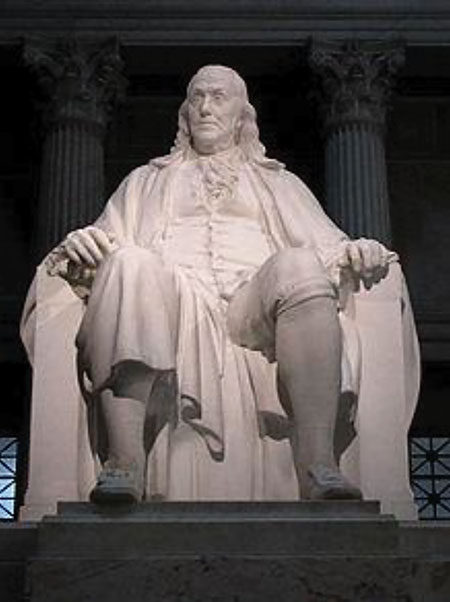
All across America and the rest of the world, Benjamin Franklin (1706–1790) is widely considered to be one of the greatest geniuses of modern age. He was born in Boston as the fifteenth son of seventeen children. Although he only had two years of formal education, he mastered German, Latin, Italian, French and Spanish through self-study. 1
According to records, he had stayed in England during the colonial years from November 1774 to April 1775 before the Civil War, working as a publisher and printer.1 Benjamin Franklin appears to have taken great pride in his achievement as a publisher and printer, so much so that he composed his mock epitaph to read, “Benjamin Franklin, Printer.”
Of course, he went on to become so much more —a successful businessman, educator, diplomat, politician, and inventor who started numerous public businesses to build a firm foundation for the newly-born United States of America. He invented the stove, the first clock with a second hand, bifocal glasses, and in June 1752, most importantly for this article, the lightning rod (Conventional Air Terminal) which was a particularly ground-breaking innovation for the level of technology and understanding of science of his time. He announced his invention of the lightning rod only three months after finding out, by experiments, that the phenomenon of lightning and electricity are of the same nature.11 He was also one of the Founding Fathers of the United States of America, well-known for his contributions to the establishment of the United States Constitution.
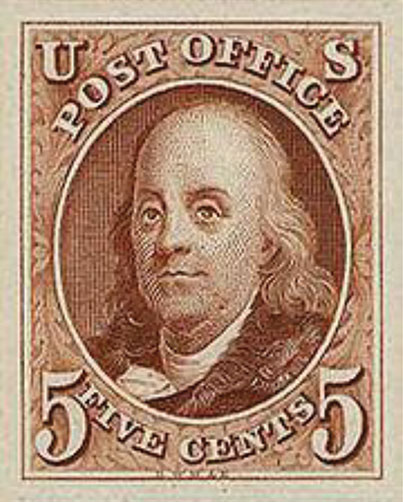
At the age of 20, setting his own life goal of moral perfection based on pragmatism, he decided on 13 virtues of “temperance, silence, order, resolution, frugality, industry, sincerity, justice, moderation, cleanliness, tranquility, chastity, humility” which he would pursue for the rest of his life. His noble character, in addition to his many great achievements, is probably why Americans chose to have Benjamin Franklin, among all great Americans like Lincoln, Washington, Edison, and Bell, on the very first post stamp in 1847 and on the largest denomination banknote. Franklin is in so many ways, the very ideal of American man. 1
Birth of Franklin Lightning Rod
Europe in the mid-18th century saw a booming interest in electricity, with electrostatic experiments being publically conducted. The Gentlemen’s Magazine published in London, England, kindled interests in electrostatic experiments (incidentally, this was the first case where the term “magazine” was used to refer to periodical publication instead of storage of information. The magazine later became a platform for research articles on lightning protection). Franklin, too, obtained his scientific information through this magazine, engaging himself in the study of static electricity and electricity, which was the most advanced field in natural science at the time.
For all the progress, however, it had remained undiscovered that a lightning strike has electric properties and occurs due to electric interaction with the ground. Benjamin Franklin was the first man who, by a ground experiment, discovered the electric property of lightning; he went from finding out that lightning is an electric discharge to inventing the lightning rod. 1
Of course, the invention of the lightning rod did not simply come by some divine inspiration to a man with only two years of formal education and very little knowledge of electricity. Franklin had made substantial efforts to obtain all the necessary information and scientific data before he could arrive at his discovery and invention. Given that this was in an age when all information on the state-of-the-art technology and news about current affairs from Europe had to travel by the sea, this was no easy task. 1
So before Franklin could conduct his experiment in June and invent the lightning rod in September 1752, he had been receiving the latest information on static electricity technology, fundamental for lightning protection through his correspondence with Peter Collinson in England. 2
Being a fellow of the Royal Society as a man of science and a botanist, Peter Collinson (January 1694 – 11 August 1768) was a person with great commercial acumen, especially in publishing and international trading of plant seeds.3 Through working as a purchasing agent for several years, Peter Collinson helped Franklin establish a library company in Philadelphia in 1731—the very first of its kind.
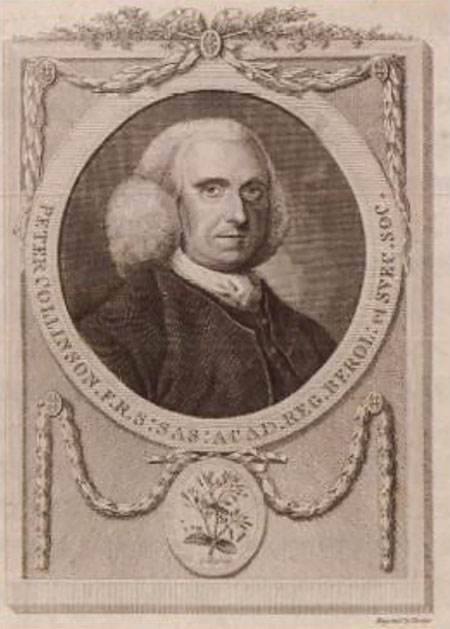
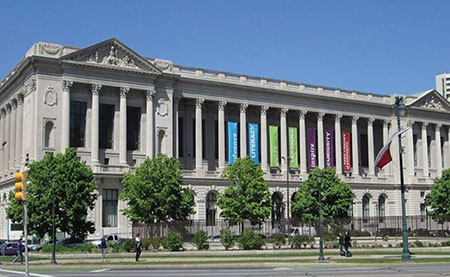
In 1743, Franklin attended a lecture by Dr. Archibald Spencer on electricity in Boston. Fascinated by what he heard, Franklin took to purchase a few experimental equipment and set out to learn how to use them from Collinson. Collinson also sent an electric tube of 2 feet (60.96 cm) which collects and discharges static electricity to the Library Company. This electric tube enabled Franklin to conduct basic experiment in electricity, namely producing static electricity by rubbing cloth on the glass tube. Known as Leiden bottle, this device is named after the University of Leiden where it was invented. Franklin was completely absorbed in experiments with the glass tube and the Leiden bottle. In his letter to Peter Collinson on 28 March 1747, he described just how much he was into his experiments. For a long time after that, Franklin and Collinson remained in correspondence with each other for their study. 1
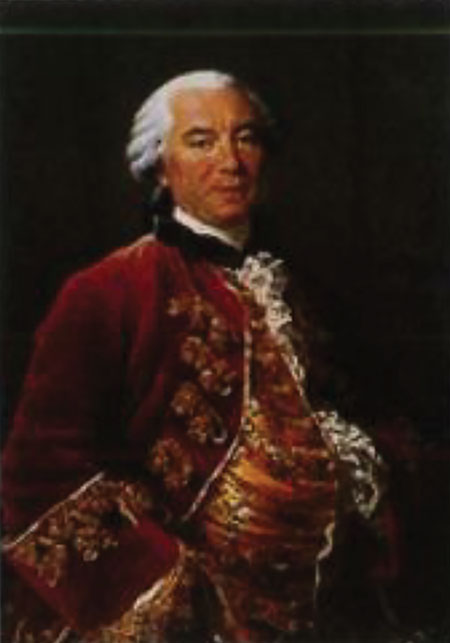
The Leiden bottle was invented by Dutch scientist Pieter Van Musschenbroek (March 1692 – September 1761), three months after a German priest, Edward George Van Kicist, had first found out that static electricity can be stored in this form.1 Franklin, conducting his own experiments with information received from Collinson, came to understand the electrostatic phenomenon. From the experiments, he verified that it is possible to discharge electricity between iron bolts at a distance of 3 inches. Franklin kept on with his experiments, writing to Collinson on 29 July 1750 that by using a sharp needle, he managed to discharge electricity without spark at a distance of 12 inches (30.48 cm). 3
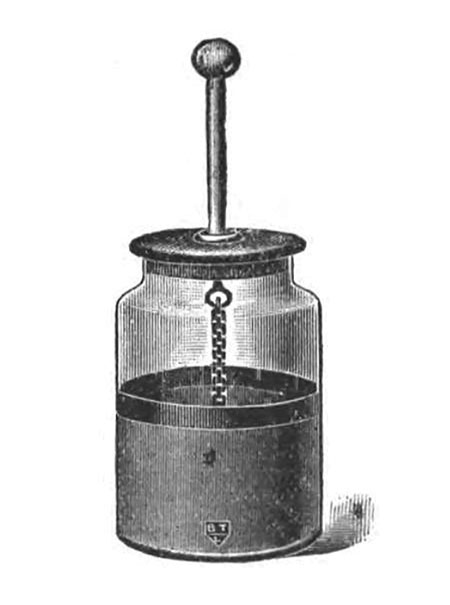
In April 1751, The Gentleman’s Magazine published an article on the principle of the lightning rod, the process of its discovery, and the results of Franklin’s experiments which had been described in numerous letters between Franklin and Collinson. The material was also published into an 86-page booklet, entitled Experiments and Observations on Electricity, made at Philadelphia in America, by Mr. Benjamin Franklin, and Communicated in several Letters to Mr. P Collinson of London, F. R. S.
The booklet was a great hit. As soon as it was published, it was translated into French, German and many other languages; distributed all over Europe, it became one of the most reprinted books in the eighteenth century. The main finding of the publication is described thus; “…on the top of some high tower or steeple, place a kind of sentry-box big enough to contain a man and an electrical stand. From the middle of the stand, let an iron rod rise and pass bending out of the door, and then upright 20 or 30 feet, pointed very sharp at the end.” The iron rod was later named Franklin Lightning Rod.
With three elements for lightning protection, the concept of the lightning rod as proposed by Franklin is, in fact, still used in NFPA 780 and another international lightning protection standard, IEC 62305. 12
1st Element – a strike terminal device
2nd Element – a grounding system
3rd Element – a conductor between the strike terminal device and the grounding system. This paper also mentioned the relationship between Franklin and Collinson, who had made significant contributions to Franklin’s discovery and the invention of the lightning rod.
Here we come across an intriguing point. The 2014 edition of NFPA 780, Standard for the Installation of Lightning Protection Systems, stipulates the height of Air Terminal to be 10 inches (254 mm) in Article 4.6.2 with Figure 4.5.2.1. 13 However, it does not provide any scientific basis for why it should be not less than 10 inches. Why has the current NFPA standard decided on that specific height of 10 in., not 20 in., or even longer? It can only be assumed that the standard is based on Franklin’s message delivered to Collinson on 29 July 1750.
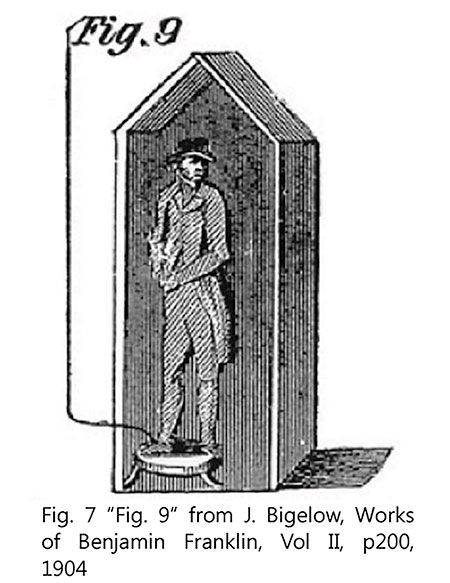
Similar cases are easily found in establishing standards. In other words, in the absence of proactive inquiry and tests, we tend to follow theories, even their small details, as they were when first announced.
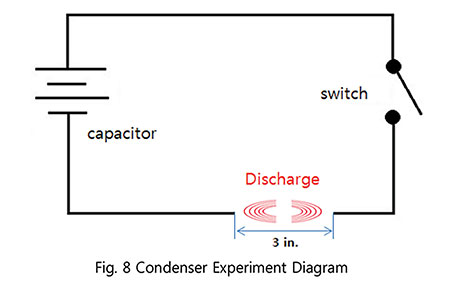
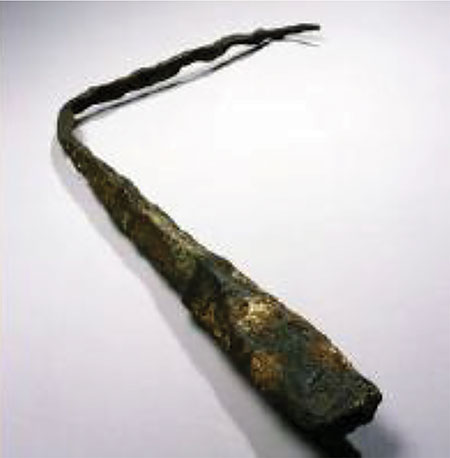
In 1752, Franklin installed a lightning rod on the roof of his own house in Philadelphia for the first time in order to collect data. The installation diagram (see Figure 10), found in Farmers’ Bulletin No. 1512 issued in November 1926; it addressed the protection of buildings and farm property from lightning.14 This picture is a part of instruction for installing an iron rod on the roof, which has been used for lightning protection system in NFPA 780 since then.
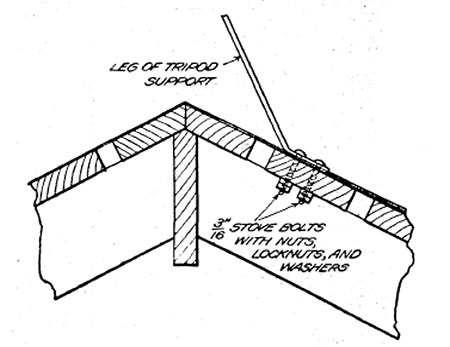
This raises a rather serious point about the Franklin lightning rod and how we use it 260 years after its original invention. In the rapidly changing world of the 21st century, it is astonishing to realize that any invention has been used without major change or improvement to its form or technology for 260 years.
Innovation Must Continue
Most great inventions in human history were made possible by a rigorous process which tests and proves the inventor’s intuition through scientific inquiry. Often inventors, from inspiration or intuition, make a supposition in response to a scientific question or a practical challenge which they then go on to verify by numerous experiments and calculations. Only by absolute immersion in his question, like a madman, can a scientist get an answer to his question; day and night, twenty-four-seven, and even in his dreams, he should remain engaged with the question that he seeks to answer.
For example, Einstein’s genius could blossom in his youthful courage which led him to his ceaseless search for the principles of the world. He once said to Carl Seelig, “I have no special talents. I am only passionately curious.” 1 Isidor Isaac Rabi, a Nobel Laureate in Physics, once said, “I think physicists are the Peter Pans of the human race. They never grow up and they keep their curiosity.” 5 In that aspect, Franklin appears to have had an excellent power of mind which allowed him to immerse himself and concentrate on the fields of his interests, such as diplomacy, publishing, and invention.
It is not always the case that one has to have much professional knowledge in a certain area to be able to make a great innovation. Rather, we often find that what sparks innovation is immersion and intuition; scientific knowledge comes afterward to verify it. Franklin’s formal education in physics was at best limited, but he was still able to invent the lightning rod by genuinely passionate study into the field and his creative insight; of course, a tireless series of experiments and communication with Peter Collinson also helped the discovery.
However, inventions of global import are likely to face strong opposition when they are first announced. Such reactionary tendency can be especially strong in physics, particularly in physic. Often coming from the establishment of academic community or those who stand to lose their privilege as a result of the new invention, there are numerous cases throughout history of opposition, ostracization, or even persecution against innovation. So many inventors with great intuition were therefore threatened, silenced or isolated for what they had discovered.
Perhaps the most well-known case is that of Copernicus, a mathematician and amateur astronomer who released the outline of an early version of his heliocentric theory in Commentariolus in 1514. Thirty years after the publication of Commentariolus, he further developed his theory in another book, On the Revolutions of the Celestial Spheres, in 1543 with supervision on printing and publication by Andreas Osiander, a Lutheran preacher. 6 His theory is regarded as one of the most radical discoveries in the history of astrology, which completely shifted the accepted view on the universe for over 1000 years.
Commentariolus was Copernicus’ astronomical declaration of rebellion and frustration and disillusionment against the prevailing Ptolemaic celestial model. 7 When Copernicus, an amateur astronomer, released his seven heliocentric theories, astronomers of the time violently rejected his theories and his book was banned during the Inquisition. Giordano Bruno, who had agreed with the theory, was executed for eight items of heresy by the Inquisition. 8
What is perhaps most surprising is that the German Reformer Martin Luther, who himself stood against the establishment, criticized Copernicus by saying, “There was mention of a certain astrologer who wanted to prove that the earth moves and not the sky, the sun, and the moon. This would be as if somebody were riding on a cart or in a ship and imagined that he was standing still while the earth and the trees were moving…. This is what that fellow (or that fool) does who wishes to turn the whole of astronomy upside down.” 9 It was after a few centuries that, although not without some minor errors, the core assertion of Copernicus’ seven heliocentric theories was proved to be correct. He made a scientific prophecy through his observation and intuition. Of course, Copernicus was certainly not the last person to meet opposition to his discovery.
For the same fate awaited Franklin’s discovery and invention 260 years ago. When Franklin first presented his experiments and invention of the lightning rod in 1772, he faced a great deal of resistance from the European academia led by the French scientists, in particular.10 While he was supported by the French Naturalists Comte de Buffon (1707–1788) and Thomas-François Dalibard for his concept of lightning protection system, Jean-Antoine Nollet (19 November 1700 – 25 April 1770) and René Réaumur (1683–1757), two leading scientists of the time, strongly opposed the idea. Jean-Antoine Nollet, in particular, rejected Franklin’s idea because of personal and political rivalry, rather than on a scientific basis.10 As the French (and, indeed, European) establishment of the eighteenth century were critical of the American’s resistance movements to gain independence from the British Empire, they simply could not accept the fact that such an important scientific discovery came out of America. For the European elite, America was still a land of savages.
Ironically, Jean-Antoine Nollet was the first one to discover and announce the importance of electrical discharge at the tip of a conducting material.10 Nevertheless, he vehemently opposed the idea of protecting structures with a lightning rod made of grounded conductive material; and he made sure that the rest of Europe was with him.
Moreover, as a result of what can only be described as ignorance and bigotry, lightning strike accidents continued all over Europe, causing significant damage to buildings, properties, and lives across the continent. 10 It was thanks to Collinson’s efforts as a printer that Franklin’s theory was eventually disseminated around Europe and won over the opponents. 10
The study of lightning continued to evolve after Franklin. The Scottish Nobel Laureate C. T. R.C Wilson attempted to measure remote electric fields to determine the structure of clouds, and the British Scientist C. V. Boys captured the phenomenon of lightning streamers with an ultra-high speed camera and investigated the mechanism in 1926 in South Africa; such discoveries greatly facilitated the study and research of lightning.
Since then, however, the field appears to have moved rather little. The number of professors, professionals, and experts researching the field of high-voltage electricity has decreased, leaving the study of high-voltage itself stagnant with only a few experts in the field of ultra-high-voltage and lightning protection in the US. NFPA 780, the US lightning protection systems standard, has not been developed much from when it was originally established. 15
Now, it is time to think again about using the 260-year-old lightning rod without any significant improvement or innovation. Franklin’s great invention served us well for the last 260 years, but changing times call for new ideas to provide ourselves with adequate protection against lightning. What should scientists and engineers do? The time is ripe for us to think outside the box—a new paradigm of lightning protection beyond Franklin’s lightning rod.
Such call for change is squarely rooted in the reality. Science magazine in November 2014 carried a cover story titled “Lightning in a Warming World,” reporting that lightning strike frequency in the US is predicted to increase by 12% ±5 per degree Celsius of global warming and by about 50% over the present century. 16
According to the article, key infrastructures will be exposed to more frequent lightning strikes as global warming continues. It seems evident that the intensity and frequency of lightning strikes will rapidly increase over the coming decades. Considering all these changes, it is certainly ironic that the state-of-the-art military radar facility and missiles, which cost billions of dollars, are still protected by a 260-year-old lightning protection system; it is almost laughable that the 21st-century arms are protected by the 18th-century technology.
Innovation in lightning protection technology is particularly difficult to achieve because it involves dealing with natural environment, research in classical physics as well as a long series of various verification tests, none of which can be compromised. Although it is not an easy process, we must endeavor to make a breakthrough in lightning protection system beyond Franklin’s lightning rod.
Franklin’s lightning rod protects a structure or object from lightning strikes by attracting lightning strikes to the rod and discharging the lightning current into the earth without damage to the structure or object to be protected. The idea is to let the lightning strike take place and minimize or divert its impact on electronic devices, buildings, etc.
While this type of technology has stood for many years without much improvement, there have been few attempts to eliminate or reduce direct lightning strikes. Over the last ten years, there have been inventions which claimed that they can avoid direct lightning strikes, but they came without any scientific and theoretical basis or empirical data from field tests; naturally, those claims soon lost traction when they failed to prevent lightning strikes.
Just as Franklin’s lightning rod overcame such vehement opposition with the publication of Franklin’s theory by his supporter Collinson, I want this article to be a turning point for physicists and engineers and scholars at universities all over the world to see lightning protection theories and practices from outside the box. Great inventions are born out of the imagination of a child. Why can’t we have buildings and structures which do not get direct lightning strikes? Can a Boeing 747 with hundreds of passengers fly through thunderclouds rather than circumventing them? A genuinely scientific approach can make the impossible possible. Since a lightning strike is a scientific phenomenon, it is possible to use scientific principles to avoid it. It is predicted that there will be more and more lightning damages as we grow even more dependent on electronically operated facilities and equipment, such as driverless cars, automated production lines, drones, unmanned aircraft, etc. On the solid grounds of Franklin’s theory and his invention, it is time for us to set off on our journey to advance the technology of next-generation lightning protection.
Limits of 260-year-old Lightning Protection Technology in the 21st Century
It goes without saying that the world has changed dramatically since the eighteenth century when Benjamin Franklin came up with his inventions. In all areas of human activity, from science to politics, economy and even environment, our lives have changed enormously.
In recent years, we see the rise of the Internet of Things (IoT) where devices use connection to the Internet to serve a much wider variety of functions. Artificial intelligence is developing rapidly, already surpassing human capability in certain areas. Automobiles have also gone through constant transformation from the steam-engine vehicle invented in 1769 to the age of driverless cars. Logistics has also seen revolutionary changes, now using drones to move items. The rate of change and progress in science and technology is ever more accelerating, so much so that it has become difficult to predict our near future
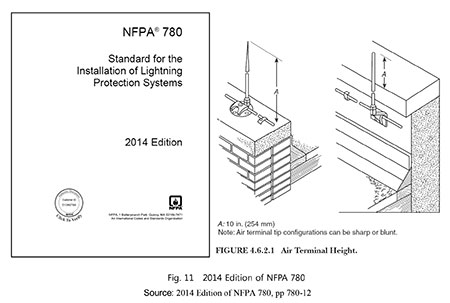
A lone exception to such trend is the 260-year-old lightning protection system, almost unchanged from its original form. As mentioned before, the standing technical standards in the U.S., NFPA 780, still contains what Benjamin Franklin announced in his publications. I believe that we can change for the better, from receiving and discharging light strikes to going completely free of lightning strike.
As the recent changes in climate and environmental conditions increase both the frequency and intensity of lightning strikes, our usage of electronic equipment, full of semiconductors and circuits sensitive to lightning damage, has also increased; it is apparent that the cost of lightning damage will certainly increase, causing much disruption to the operation of modern society. We are witnessing a world with changing technological paradigms, from AI, robotics, automatics, ICT (information and communications technology) to integration and ultra-high-speed. Of course, all of these new technologies will rely on lightning and surge protection for uninterrupted operation; it is a worrying thought that lightning protection stands unchanged for 260 years when all others that depend on it for safety are changing so rapidly.
So it is the call of our time to facilitate change and innovation in our centuries-old lightning protection technology to go beyond the idea of receiving lightning and discharging it to the ground. This call should be a shared challenge for all scientists and engineers in the field.

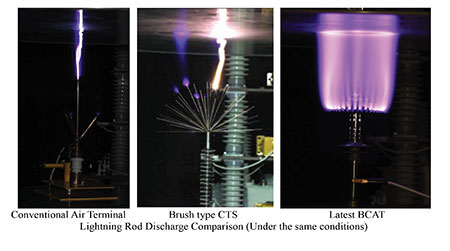
Development Direction for Lightning Protection Technology
How, then, should the future of lightning protection technology change and develop? Numerous electrical engineers since Benjamin Franklin have sought to improve lightning protection technology. The products of their continued and combined efforts are contained in national and international standards like IEC 62305 (Lightning Protection System), IEC 61643 (Low-voltage Surge Protective Device), IEC 62561 (Lightning Protection System Components) as well as NFPA 780, UL 96, and UL1449.
However, compared to the progress made in the grounding field, research and development on air terminal has moved little from the Conventional Air Terminal, which receives lightning strikes. An exception is Cloud Bipolar Conventional Air Terminal (CBCAT) which operates to reduce the probability of direct lightning strike. Developed ten years ago by OMNI LPS, the new technology has been announced in a series of IEEE articles.
Now scientists and engineers must transcend the limits of existing concepts and aspire to new intuition and technological innovation. I propose a few pointers for development as below.
First, we can try to physically eliminate the conditions under which thunderclouds form. By mitigating natural conditions which lead to the creation of electrically charged thunderclouds, we should be able to prevent lightning damage in advance and fundamentally. The challenge is not at all impossible even with existing technology.
Second, going beyond the principle of Conventional Air Terminal, which works by receiving lightning strikes, we can try to reduce the lighting strike itself. New devices like CBCAT does this. By significantly reducing the probability of lightning strike with CBCAT, we can offer protection for infrastructure, ICT devices, communication equipment, etc.
Third, in conjunction with research on lightning protection technology, preparations must be made to protect ourselves against electromagnetic pulse of lightning (LEMP) with strengthened standards, improved materials, and technology. We must prepare ourselves against large-scale grid blackout due to solar wind, damage from LEMP and nuclear weapons, as well as smaller-scale acts of terrorism using LEMP. Lightning protection and LEMP protection can be combined to generate significant synergy in technological innovation.
Fourth, cutting-edge ICT devices and equipment need to be protected from external surge. Also, the lightning protection system must be integrated into the development of such devices which form an indispensable part of our lives. With the advent of driverless cars which are operated through electronic devices and systems, the risk of lightning strike causing terrible damage increases dramatically. Presently, equipping driverless cars with protection from lightning surge or LEMP presents both technical and economic challenges; much research is required to offer viable solution. The same applies to drones which are becoming more common.
Fifth, the existing grounding technology must go beyond discharging lightning energy into the ground. Just as all other technologies go through radical transformation, the concept of using steel, copper or stainless steel to ground circuits must can benefit from a fundamental review. The role of grounding, i.e., discharging energy from lightning or LEMP to the ground, is of utmost importance; and yet, little progress has been made in either technology or product standards. For instance, imagine a brand-new house with new drainage pipes. To begin with, the pipes can process even torrential rainfall; but as time goes, the pipes get blocked or old and therefore prone to overflowing or bursting, thus flooding the house in turn. Grounding works very much like drainage pipes; we live in a world which is becoming increasingly rainy, but we are holding onto our 260-year-old drainage pipes.
As grounding is buried underground, it must require minimum or no maintenance. To be able to process a high volume of energy in a very short period, new standards, technology and material must be developed.
Conclusion
Through five sections, I have sought to tell the story of the Franklin lightning rod from its invention 260 years ago to how it has been used until today.
Cancelling a spaceship launch at NASA’s Houston base due to environmental conditions like lightning cost us an astronomical sum. ICT (Information and Communication Technology) devices are becoming ever more complicated and sensitive; more of our lives are managed and facilitated by devices which will be controlled electronically through IoT; even wars may be fought not by human soldiers but by robots in not too distant future. The importance of lightning protection only grows with these changes. Now is the time to seriously rethink the existing concept of lighting protection as well as LEMP protection.
References
1 A. S. Inan, “Happy 300th Birthday, Ben Franklin!,” IEEE EMC Society Newsletter, Issue No. 211, pp. 87-92, Fall 2006.
2 http://en.wikipedia.org/wiki/Peter_Collinson_(botanist)
3 http://www.revolutionary-war-and-beyond.com/benjamin-franklin-letter-to-peter- collinson-july-29-1750.html
4 https://en.wikiquote.org/wiki/Albert_Einstein Ich habe keine besondere Begabung, sondern bin nur leidenschaftlich neugierig. [I have no special talents; I am only passionately curious.]
5 https://en.wikiquote.org/wiki/Isidor_Isaac_Rabi
6 Andreas Osiander, “On the Revolution of the Celestial Spheres”, 1543
7 https://en.wikipedia.org/wiki/Commentariolus http://copernicus.torun.pl/en/archives/astronomical/1/?view=transkrypcja&
8 https://en.wikipedia.org/wiki/Giordanobruno
9 http://www.leaderu.com/science/kobe.html Luther and Science by Donald H. Kobe.
10 Chandima Gomes and Ashen Gomes, “Lightning; Gods and Sciences”, 2014 ICLP, Shanghai, China.
11 http://www.gutenberg.org/files/45515/45515-h/45515-h.htm
12 IEC 62305 Lightning Protection System
13 NFPA 780 Standard for the Installation of Lightning Protection System.
14 “Farmers Bulletin No. 1512”, 1926
15 History of the NFPA Codes and Standards-Making System, NFPA
16 Lightning in a Warming World, Science magazine, December 2014.
17 Joon-Ho Lee, Young-ki Chung, Hee-Ro Kwak, and Il-Han Park, “Local Electric Field Analysis for Evaluation of Charge Transfor System Using Sequential Subwindow Technique”, IEEE Transactions on Magnetics, 2004, Vol. 40, No.2, pp 679-682, 2004 03
18 Se-Hee Lee, Se-Yeon Lee, Young-Kig Chung, and Il-Han Park, “Finite-Element Analysis of Corona Discharge Onset in Air with Artificial Diffusion Scheme and Under Fowler-Nordheim Electron Emission”, IEEE Transactions on Magnetics, 2007, Vol. 43, No.4 pp 1453-1456, 2007 04
19 Myung Ki Baek, Youngki Chung, and Il Han Park, “Experiment and Analysis Effect of Floating Conductor on Electric Discharge Characteristic”, IEEE Transactions on Magnetics, 2013, Vol. 49, No. 5, pp 2323-2326, 2013 05







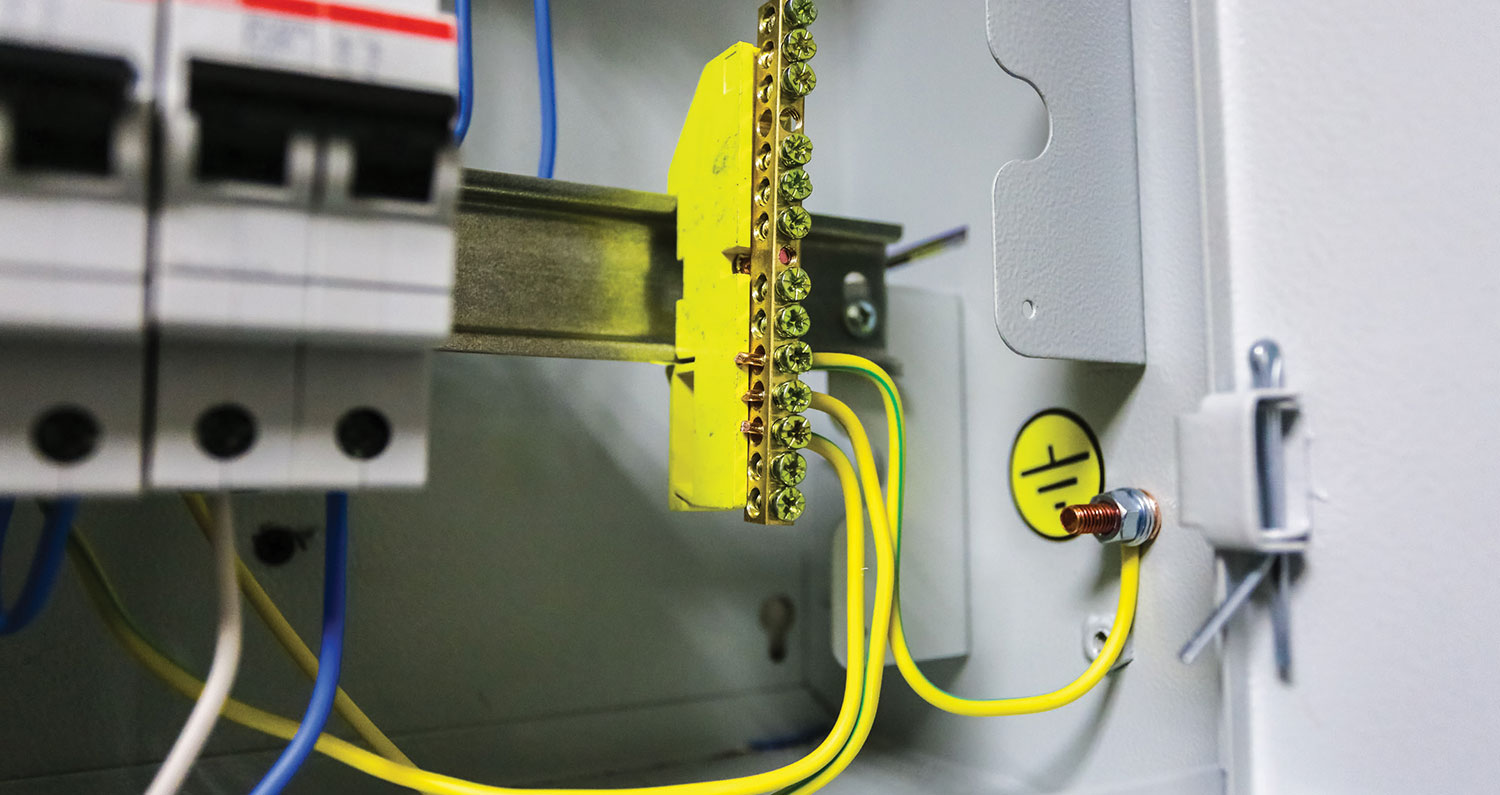
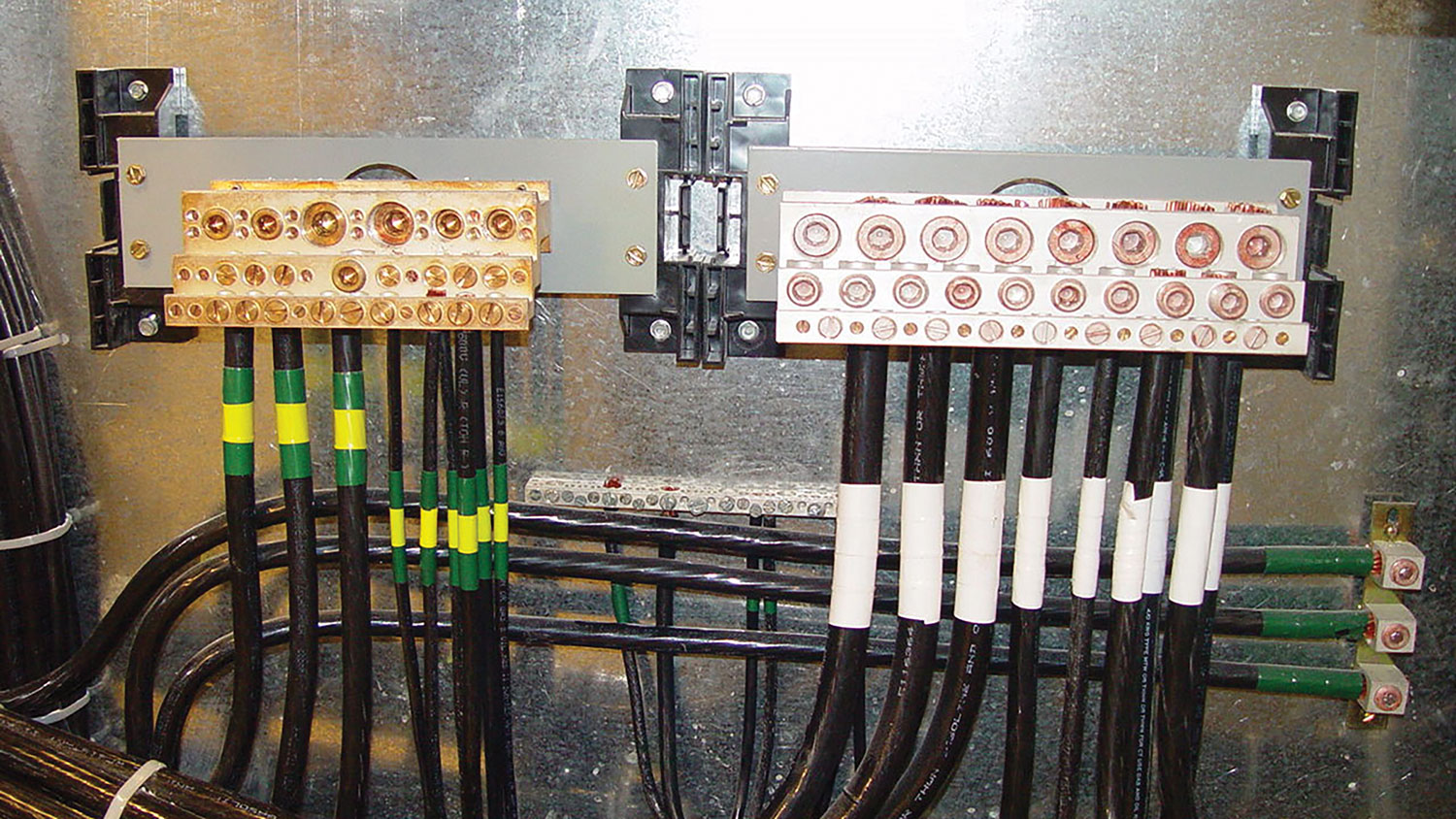

Find Us on Socials